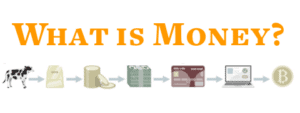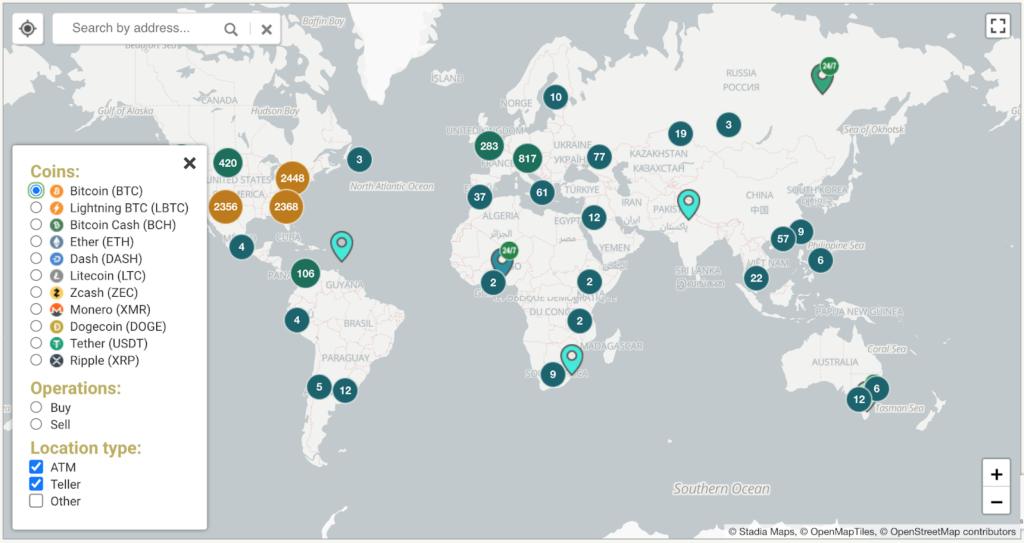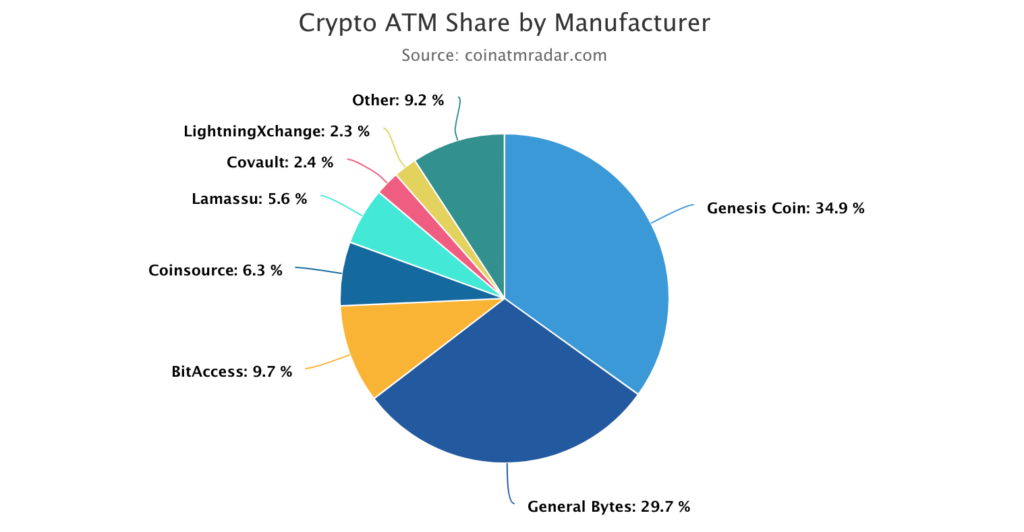Bitcoin ATMs may seem confusing or downright useless – why would a digital currency need a physical ATM? In fact, a Bitcoin ATM is a very useful way to buy and sell Bitcoin, because they operate very similarly to traditional ATMs. In this article, we’ll show you how to use Bitcoin ATM to buy and sell bitcoin.
As Bitcoin rises in price and gains global recognition as a safe haven against devaluation of major currencies, the number of operating Bitcoin ATMs in existence continues to climb. According to Coin ATM Radar, there are over 30,000 Bitcoin ATMs in operation around the globe today – that’s up from just 14,000 at the beginning of 2021, and 2,000 at the start of 2018.
Even Coinstar, sensing the end of the fiat currency era and the beginning of the era of decentralized digital currency, is expanding their change-accepting machines to also operate as Bitcoin ATMs through a partnership with CoinMe. This move brought thousands of Bitcoin ATMs online in the United States.
In this post, we’ll walk through how to use a Bitcoin ATM and what you should expect as far as fees and requirements to buy or sell Bitcoin using a Bitcoin ATM. If you’d like to store your Bitcoin in the most secure way possible, check out our guide to the best Bitcoin hardware wallets.
What You Need to Know about Bitcoin ATMs
Let’s walk through all you need to know about Bitcoin ATMs: why you might want to use one, their disadvantages, what you need to bring to use one, the general process for buying or selling, and how to find your local Bitcoin ATM.
Advantages: No Banks, Quick Access, Lighter KYC
- No bank account necessary
- With a Bitcoin ATM, you can buy Bitcoin using cold, hard cash. Online Bitcoin exchanges require you to connect a bank account. Unfortunately, many banks are wary of working with Bitcoin exchanges (Bitcoin, after all, makes banks a lot less vital to the financial system!) – this means your bank may not allow you to buy Bitcoin.
- Quick access to Bitcoin or cash
- With a Bitcoin ATM, it takes only a few minutes to go from Bitcoin to cash or vice versa. Bitcoin exchanges and brokers, on the other hand, can take several days to deliver you your bitcoin or cash in your bank account. The legacy banking system is just slow due to the number of counterparties and clearinghouses involved in a single simple transaction.
- Less strict “Know Your Customer” requirements
- In some countries, Bitcoin ATMs may not require as much personal information about you in order to buy Bitcoin as exchanges typically do. Most online exchanges will require your name, address, and pictures of a form of identification in order to process any Bitcoin purchase. This is mandated by governments – who are threatened by Bitcoin, since it could take away their ability to print money!
Bring With You
There are a few things you’ll need to bring with you to use a Bitcoin ATM. First, you’ll need:
- Cash or another form of payment, like a debit card, if your local machine accepts it.
- ID like a driver’s license, state/national ID card, or passport
- Bitcoin wallet on your phone – which is not always necessary, but good to have. Use a wallet like those recommended below.
That’s it!
Find a Bitcoin ATM
Finding your local Bitcoin ATM is easy with the CoinATMRadar map tool. Just search your city or address and you’ll find the nearest Bitcoin ATM. They also provide great information about specific machines – fees, limits, whether you can buy and/or sell, what identity verification is needed, and more. Just like standard ATMs, all of these factors differ depending on the machine, the operator, and the area the machine is placed.
If you’re in the United States, you may also want to check out the CoinMe location tool. CoinMe partnered with Coinstar to install Bitcoin ATM software and hardware in many of Coinstar’s coin-collection machines located in grocery and department stores across the nation.
How to Use a Bitcoin ATM
Using a Bitcoin ATM is simple, similar to a normal ATM where you can withdraw cash from your bank account. However, Bitcoin ATMs come in different types – some are 1-way, only allowing you to buy or sell Bitcoin using that machine, and some are 2-way, allowing you to both buy and sell.
Depending on what you’d like to do, the steps are usually as follows:
- Select the amount of Bitcoin you want to buy or sell
- Verify your identity by scanning your identification card
- Some ATMs may also ask for you to verify your phone number via SMS or scan your fingerprint.
- Buying Bitcoin?
- Scan a QR code representing your Bitcoin wallet address
- Insert cash
- Wait for the Bitcoin transaction to broadcast to the network and your wallet (should be nearly instantaneous)
- Selling Bitcoin?
- Send Bitcoin from your wallet to the QR code on the Bitcoin ATM screen
- Wait for the ATM to recognize your Bitcoin transaction as sent
- Take your cash.
Additional Wallet Delivery Options
While the above process is very representative of most Bitcoin ATMs, you may find a few more options or steps depending on the exact ATM you use. Bitcoin ATMs differ depending on the type, the operator, and the jurisdiction they’re placed in.
Printing a Paper Wallet
Some Bitcoin ATMs will be able to print a ‘paper wallet’ with a QR code that contains your Bitcoin. If you choose an option like “generate wallet” on the ATM, it may produce this paper for you. This will usually look like a normal receipt, but with 2 large QR codes on it labeled public and private key.
You’ll want to move your Bitcoin off this paper wallet to a mobile wallet like those recommended below to ‘import an existing wallet’. You’ll want to create a new wallet as well, and transfer your bitcoin from the imported wallet to the new one. This is key – a Bitcoin ATM operator (or a hacker) could have access to the funds on the printed paper wallet, but they won’t have access once you move those funds to your newly created wallet.
Email Delivery of Wallet
Some Bitcoin ATMs will give you the option of emailing your Bitcoin wallet to you, encrypted. You will need to define a password and remember it, as you’ll need it to open the wallet file sent to you via email. See above section on paper wallets, as you’ll want to move your bitcoins to your own wallet after you import the wallet given to you by the ATM.
Here’s a walkthrough of how to send Bitcoins to your email using a General Bytes Bitcoin ATM.
Walkthrough Videos and Reviews of Bitcoin ATMs
Over 85% of Bitcoin ATMs in operation today come from five manufacturers: Genesis Coin, General Bytes, BitAccess, Coinsource, and Lamassu.
Below, we’ll show you some reviews and videos on how to use these specific Bitcoin ATMs, as well as Coinstar Bitcoin ATMs operated by CoinMe – which are popular in the US. Keep in mind that specific requirements and purchase processes may differ depending on your location. ATM operators often configure the ATM machines in different ways to comply with local regulations or provide additional services.
Genesis Coin Bitcoin ATMs
Genesis Coin has 3 models of Bitcoin ATM machine: They are known as Genesis, Satoshi, and Finney. Each has a variety of hardware you may see on the machines, like a number pad, card reader, and bill slot or dispenser. If they have a cash dispenser, like the Genesis1 or Satoshi Edge, they are likely equipped for both buy and sell. If they lack a cash dispenser, like the Satoshi1 and Finney3, you may only buy Bitcoin – not sell.
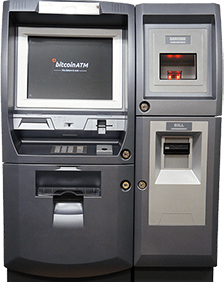
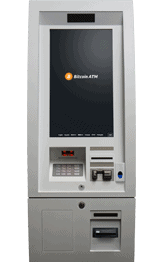
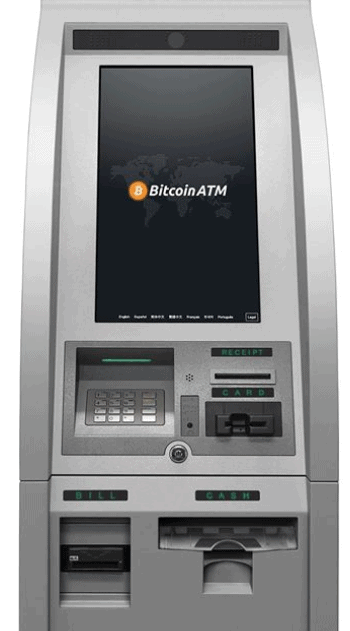
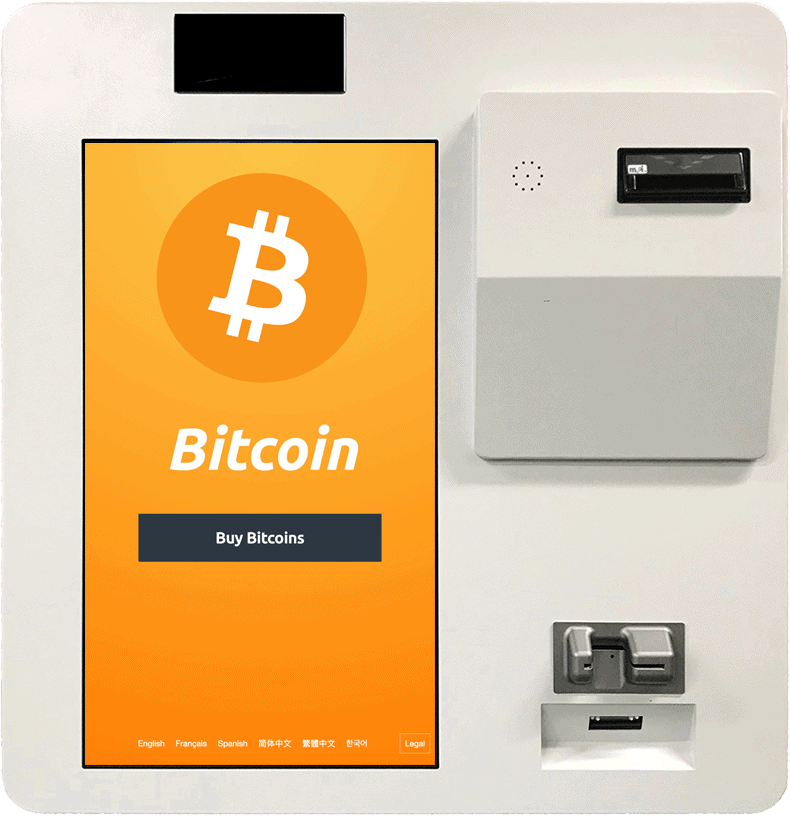
Here is a video review of buying Bitcoin on a Satoshi1 machine operated by BitcoinDepot in the US.
General Bytes Bitcoin ATMs
General Bytes makes 3 ATM models: BATMTwo, BATMThree, and BATMFour. The BATMTwo is small and only allows Bitcoin purchases, while the BATMThree and BATMFour are tall, standing units with large touch screens that allow users to buy and sell Bitcoin. General Bytes ATMs are common around the world, with most in Europe and North America.
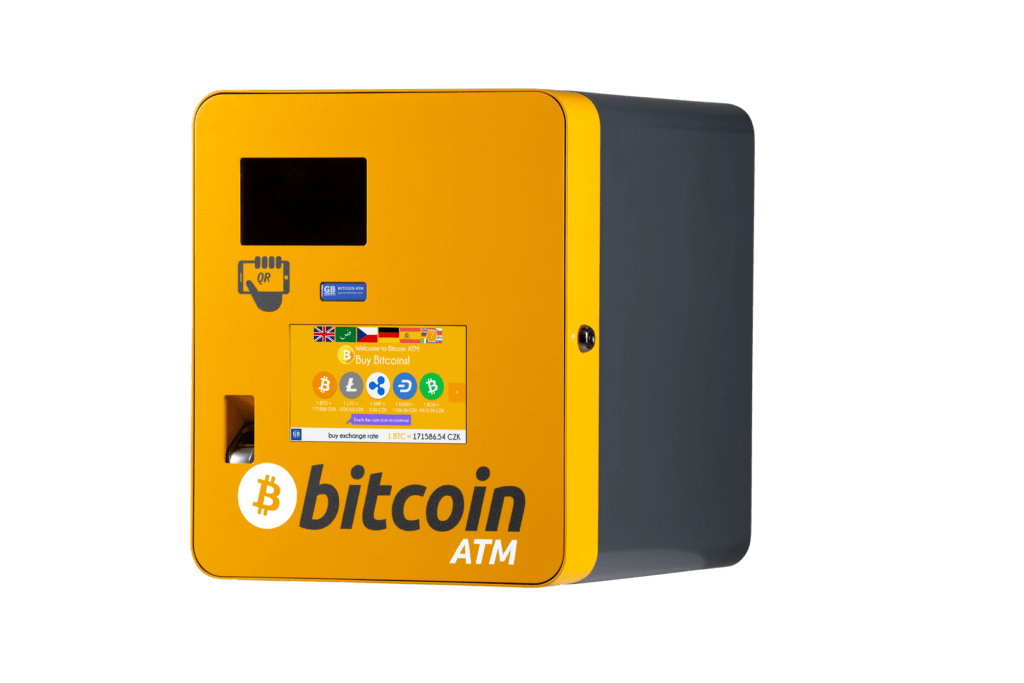
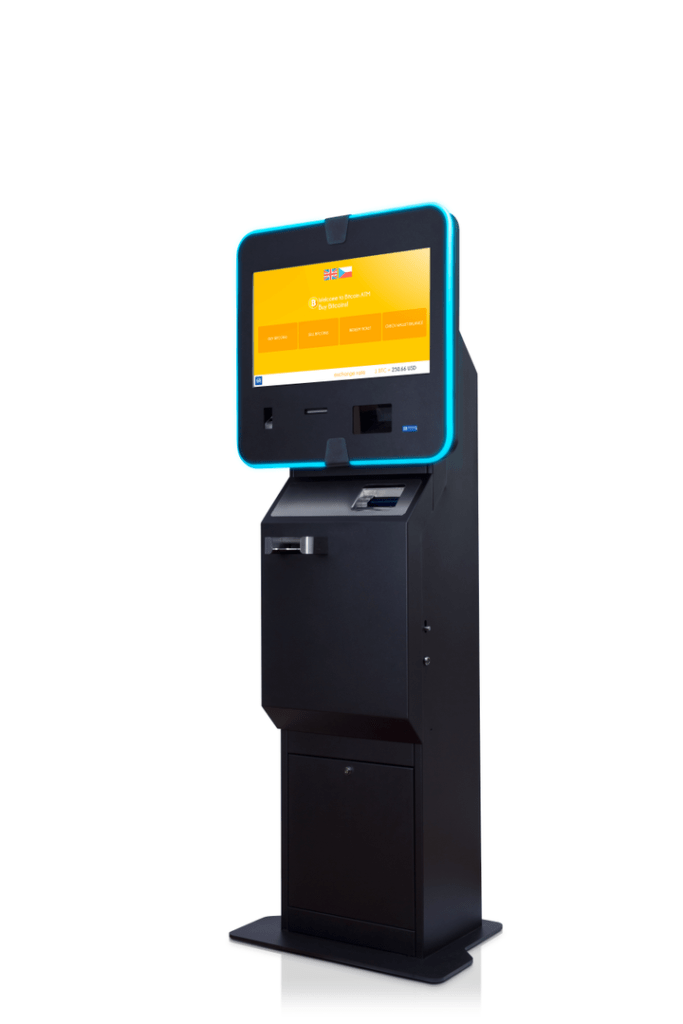

Here’s a quick video on how to purchase Bitcoins on a BATMTwo Machine.
I live near a General Bytes Bitcoin ATM, so I went to check it out. The fee, including the marked-up exchange rate, was around 7% – typical for a Bitcoin ATM.
BitAccess Bitcoin ATMs
BitAccess is a Canadian producer of Bitcoin ATMs with a slew of products to help you manage your Bitcoin holdings. They currently offer 2 Bitcoin ATM models: The BTM C and BTM SE. Both allow buying and selling Bitcoin, and look very similar to standard ATM machines. These machines are common in the United States and Canada, with a few in Europe. A live map of all BitAccess Bitcoin ATM locations can be found on their site here.
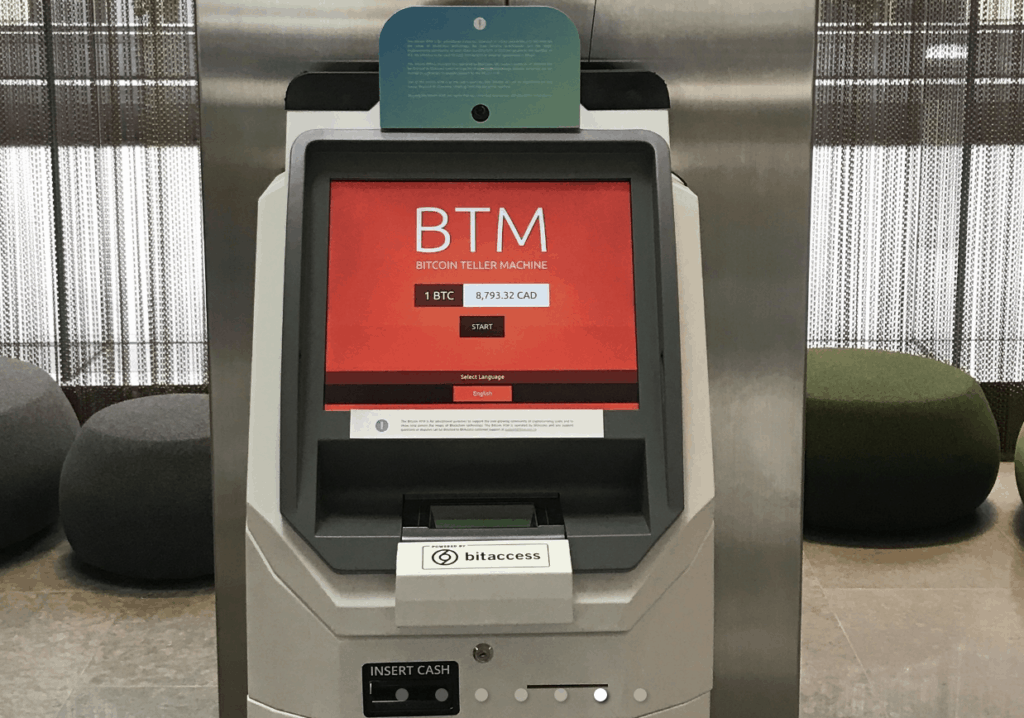
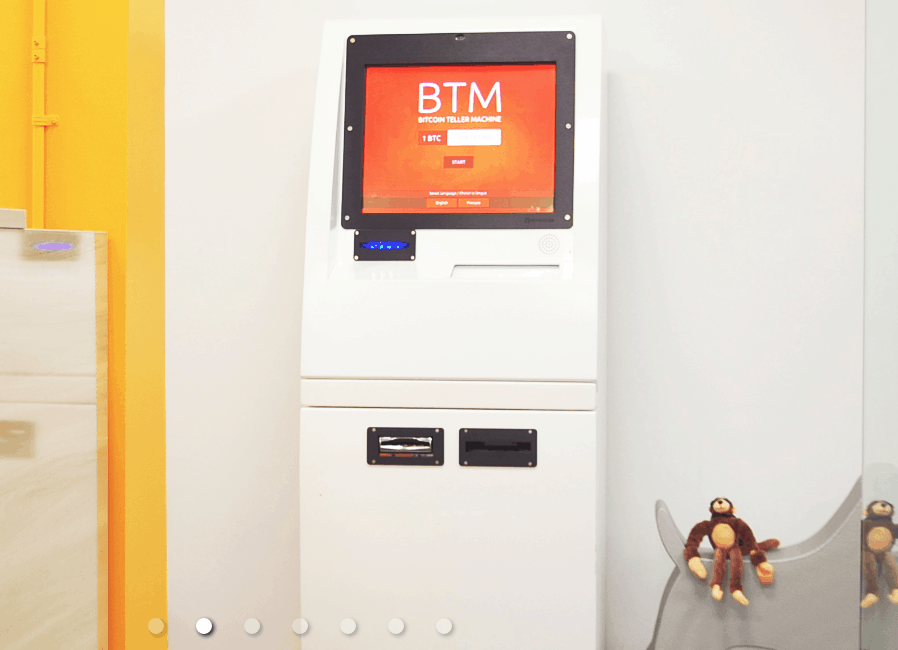
Here’s a quick video on how to use a BitAccess BTM, both to buy and sell Bitcoin:
Coinsource Bitcoin ATMs
Coinsource has a single ATM type that looks just like a standard ATM. Common all across the United States, you can fund a full list and map of locations here. Unlike many other Bitcoin ATMs, Coinsource allows you to do your identity verification online before you approach the ATM, so that using the Bitcoin ATM can be a quick and seamless process – no ID needed.
Coinsource is focused on compliance in the US, with the goal of being fully compliant with regulations in all 50 states so they can spread their ATMs across the country. In late 2017, Coinsource had the largest network of Bitcoin ATMs. Since then, Genesis Coin, General Bytes and BitAccess have sped past them.
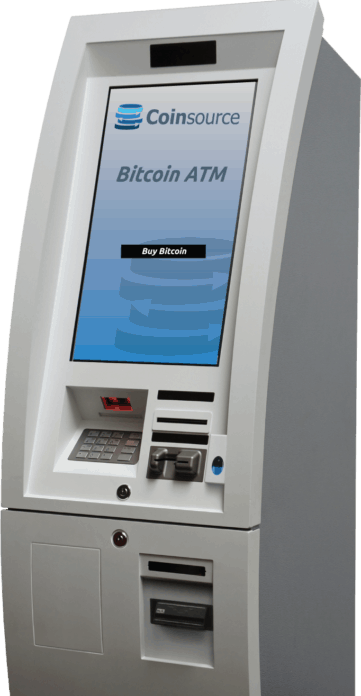
Here’s how to create a Coinsource account and purchase Bitcoin at a Coinsource ATM.
Lamassu Bitcoin ATMs
Lamassu is based in Luzern, Switzerland, and produces 4 models of Bitcoin ATMs: the smaller Gaia and Duoro II which support buying Bitcoin, and the standing Sintra and Sintra Forte models equipped for both buying and selling Bitcoin. Lamassu’s units include fully open-source software, meaning no license fees or black boxes for ATM operators to deal with. Lamassu’s units are spread across the world, with locations on every continent (except Antarctica – sorry, explorers).
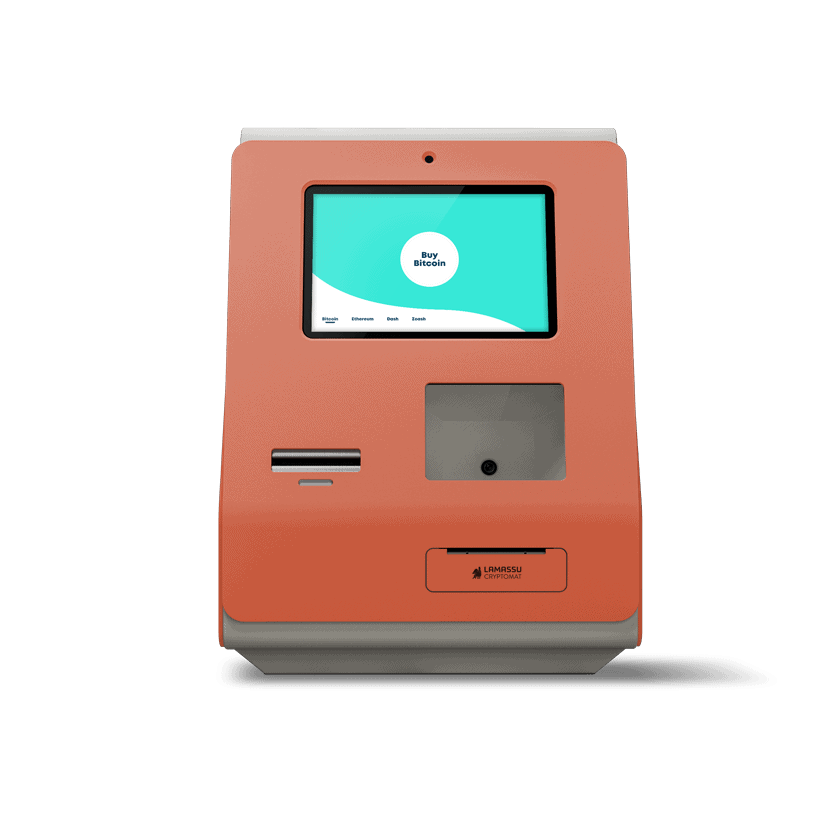
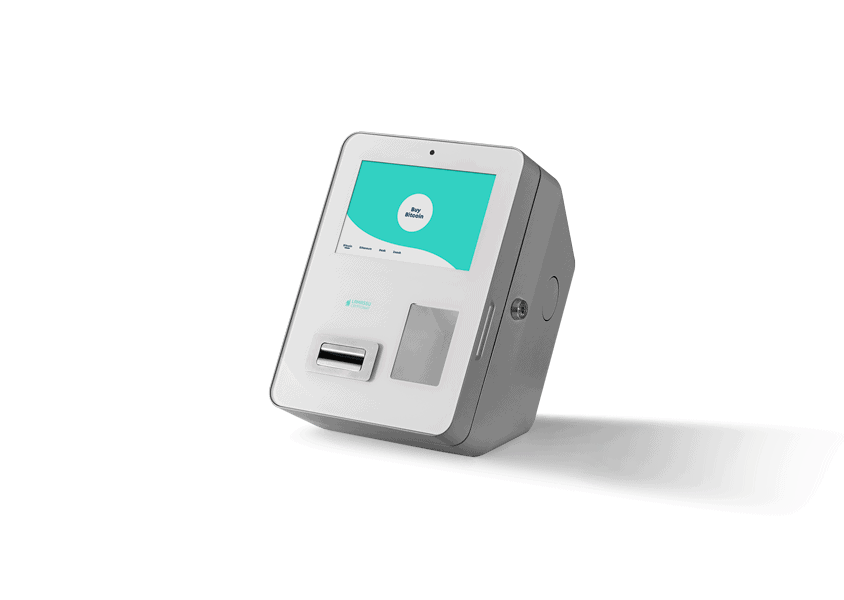
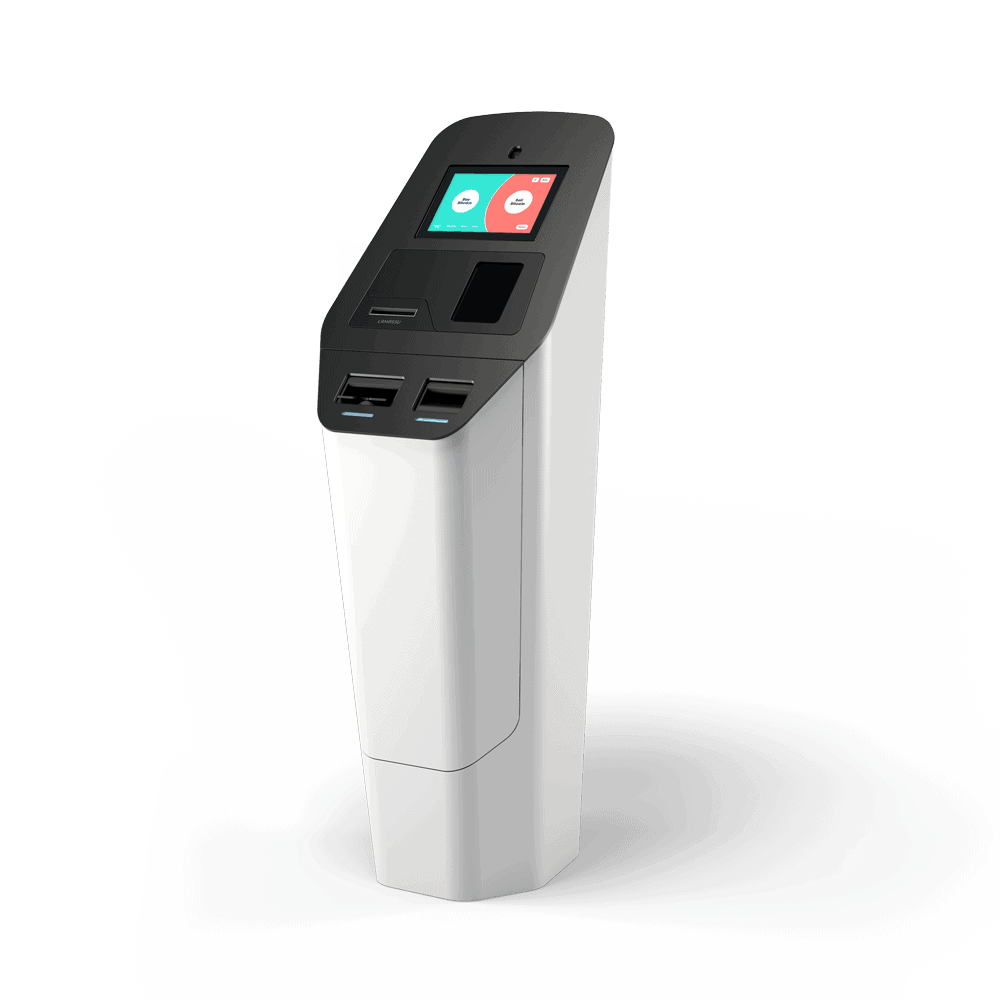
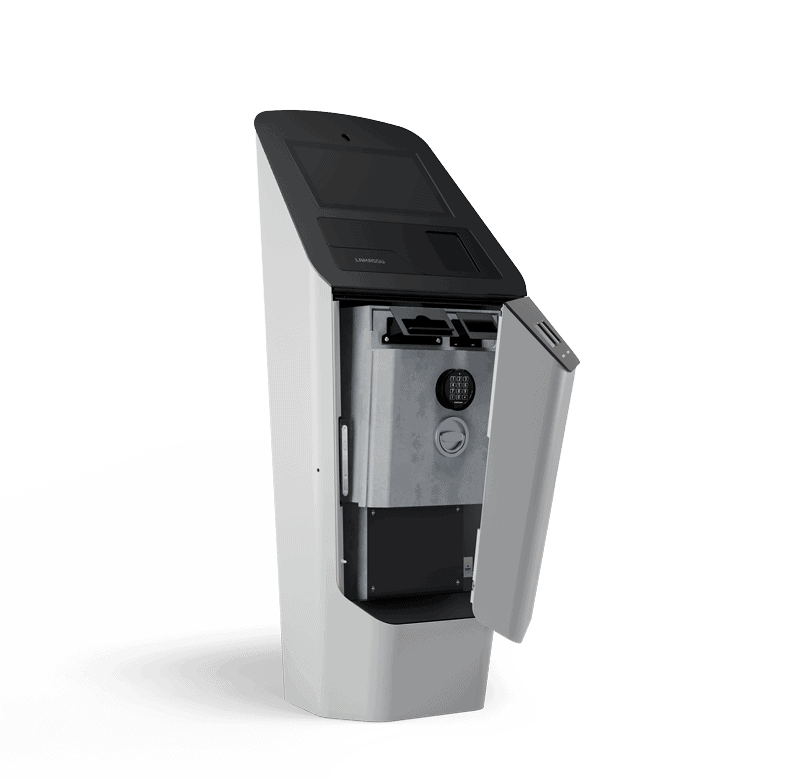
Here’s how to use Lamassu’s Gaia unit. The unit occasionally stops when the user attempts to purchase over a predefined limit of Bitcoin, in order to do more identity verification steps.
Here’s how to buy and sell Bitcoin on Lamassu’s larger Sintra unit.
Coinstar Bitcoin ATMs by CoinMe
In the United States, some Coinstar machines are now equipped as Bitcoin ATMs. Here’s a quick video on how to purchase Bitcoin using a Coinstar machine. You’ll need to create a CoinMe account to redeem your purchased Bitcoin. We recommend you move your Bitcoin off of your CoinMe wallet and on to a wallet you own, like one on your phone, just like we recommend above in the section on additional wallet delivery options.
Find Coinstar Bitcoin ATMs using this tool. Here’s a review a Reddit user made of the process to buy Bitcoin at Coinstar.
Here’s the process to use a Coinstar machine to buy Bitcoin.
And here’s someone actually going through the process.
Related Questions
Popular Bitcoin Wallets
In order to secure the bitcoin you purchase from a Bitcoin ATM, you’ll want to put it on your own wallet. The easiest way to get set up with a Bitcoin wallet is to download a wallet application to your phone. This app uses your phone’s hardware to create a unique public and private key, so that your bitcoin ‘password’ (private key) is securely stored on your device.
For iPhone users, I recommend Bluewallet.
For Android users, I recommend Mycelium.
You can also use a dedicated hardware wallet like Trezor or Ledger, or a simple but easy-to-lose paper wallet. No matter which wallet you choose to use, back up your seed phrase carefully.
Other Places to Buy Bitcoin
There are many other options for buying Bitcoin other than Bitcoin ATMs. Two of the most common are brokers and exchanges – I cover the cheapest options here. All of these are simply websites or apps where you create an account, verify your identity, connect your bank account and begin buying or selling Bitcoin using your bank account.
I do not recommend using traditional exchanges or ‘fintech’ companies like Robinhood or eToro to purchase Bitcoin, as these tools often do not allow you to withdraw your Bitcoin to your own wallet, which is critical. If you’re curious why holding Bitcoin on your own wallet is so important, read our primer on money and the digital dollar.
If you like my work, please share it with your friends and family. My goal is to provide everyone a window into economics and how it affects their lives.
Subscribe to email updates when new posts are published.
All content on WhatIsMoney.info is published in accordance with our Editorial Policy.
